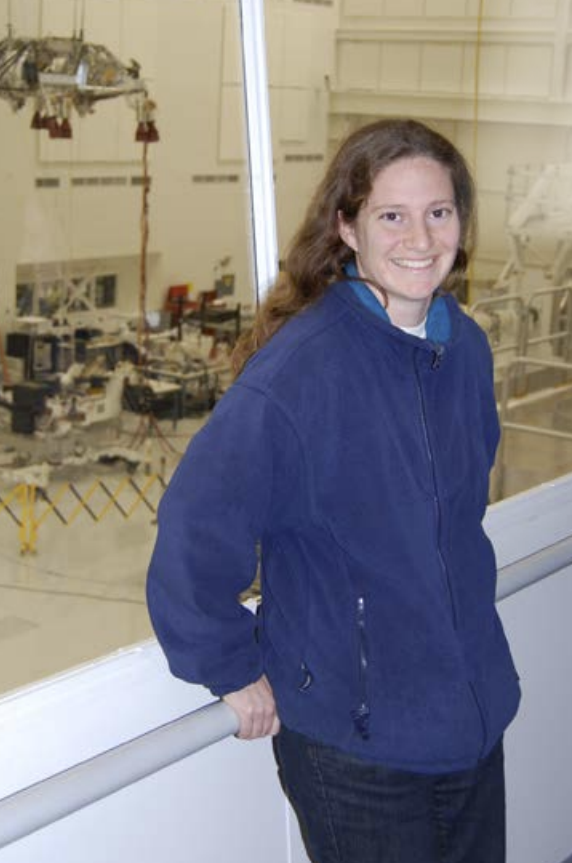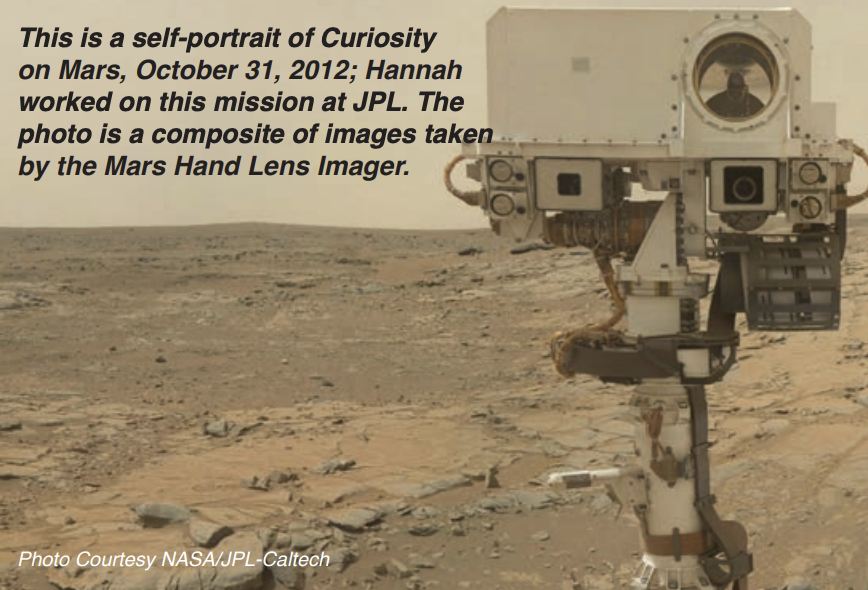Hannah Goldberg: Crazy about asteroids

 Enlarge
Enlarge
“I think you need to be a little crazy to work at a place that says its goal is asteroid mining,” says Hannah Goldberg, senior systems engineer at Planetary Resources, Inc.
Hannah Goldberg went from working at one of the premiere labs associated with NASA, to being one of the earliest team members of a young company that wants to further human space exploration – by mining asteroids.
To some it seems crazy – but to quote EECS alumnus and company investor Larry Page, Planetary Resources simply has “a healthy disregard for the impossible.” The company is run by visionaries and entrepreneurs involved in a high risk field that they believe can revolutionize the future of humans in space.
But what could be gained from asteroids? One of the key items is water, which they already know is readily available in these interplanetary rocks. Water, often separated into hydrogen and oxygen, is a typical propellant for spacecraft. For extended Deep Space travel, you can’t possibly carry enough water from Earth – the ship would never get off the ground.
Asteroids are like gas stations for spacecraft, said Hannah, and there are a lot of them (over 1,500 are easier to reach than the Moon, which is their initial target).
Planetary Resources is planning to send up small unmanned robotic spacecraft to mine the water and any precious metals that may also be on the asteroids, such as platinum. The next step, using the water as gasoline for larger spacecraft, is years if not decades down the road.
How did Hannah get to work for such a unique company? She had previously worked with the President and Vice President of Planetary Resources at NASA’s Jet Propulsion Laboratory (JPL). They had faith in Hannah to get the job done, whatever that job turned out to be.
At JPL, Hannah worked as part on the navigation and control of spacecrafts for autonomous landing on the moon and Mars. This led to her working on the calibration and testing of Curiosity’s sensor hardware. She still checks the photos coming in from Curiosity. “It’s amazing, the landscape over there,” she says.
She also worked on a project called Micro-inspector spacecraft, which were small autonomous spacecraft that inspected space shuttles. In essence they were small flying robots.
The switch from such a large company as JPL, where there was an expert for everything, to a small company was striking, but that would quickly change. Once part of a 5 member team, she is now one of about 20 and that’s just the full timers. “We also have a lot of interns,” said Hannah. However, she thinks her job title, Senior Systems Engineer, is still just a special phrase for “everything.”
“Everything” includes making sure everything is working the way it should, and that everything on the spacecraft fits together. “The work I’m doing here is more similar to what I was doing at Michigan than at JPL,” said Hannah. At Michigan, she worked on the student satellite Icarus.

 Enlarge
Enlarge
Throughout her career in California, Hannah worked with a high school FIRST Robotics team. In fact, when the original team advisor stepped down, she was encouraged to get a teaching certificate so she could be the faculty advisor. “I ended up teaching an engineering class and a robotics class in high school, almost as a side career. The students were great,” said Hannah.
In 2010, she received the San Diego Regional Woodie Flowers Award, the highest honor an individual can receive from FIRST. Hannah keeps in touch with many of the students she’s taught; some are already out of college.
Her work with high school students continues at Planetary Resources. She manages a team of students from Aviation High School who work on specific projects at the company during the summer. If she can transfer her teaching certificate, we may find her in the classroom once more, inspiring students to take their dreams even higher.
Hannah has about a year before the first Planetary Resources spacecraft is launched, which is a small publically-funded space telescope called ARKYD – and public interest is surging. “One of the most exciting things about this company,” said Hannah, “is that we started a conversation about asteroid mining – and everyone thought we were crazy. Now people actually talk about it like it’s legitimate.”
Especially for Students
What was your best preparation for your current job?
“All my classes were EE-focused,” said Hannah, “but I also worked at the Student Space Systems Fabrication Lab and on the Icarus student satellite, which was a UROP project. That’s what led me to working on spacecraft. The work I’m doing here [at Planetary Resources] is more similar to what I was doing at Michigan than at JPL.” Hannah’s work on Icarus throughout her undergraduate years culminated in her being named chief engineer for the project. She was invited to give a talk in Berlin, and then to work for JPL.
“Get involved with the student teams,” advises Hannah. “It’s what makes the classwork make sense. Working in a team environment is what the real world is like. You have to think on your feet, work with people, and figure out what to do when you don’t have immediate access to the right resources. I’m sure that any of the student teams give that type of experience.”
For Hannah, working on a NASA spacecraft while an undergraduate student was “everything.” “I was treated like a professional from the time when I was a freshman and sophomore, even when I really had no business to be treated like a professional. But it let me understand what it takes to build a spacecraft and put together a system.”
 MENU
MENU 
